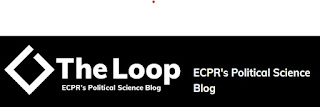Part II: PJ is useful tool for combating bad information
Last time (see previous post below), I talked about the threat posed to democracy by mis and disinformation. Today, in Part II of Misinformation, Democracy, and the Peace Journalism solution, I'll discuss how peace journalism can be used to combat bad information.
The peace journalism solution
From a media standpoint, one of the best ways to combat
the corrosive effects of mis and disinformation on democracy is by employing
the principles of peace journalism.
There are several valid definitions of peace journalism. Dr. Jake Lynch and Annabel McGoldrick, in their groundbreaking book Peace Journalism (2005), define it as, “when editors and reporters make choices - of what to report, and how to report it - that create opportunities for society at large to consider and value non-violent responses to conflict.” PJ “builds an awareness of nonviolence and creativity into the practical job of everyday editing and reporting.”
The Center for Global Peace Journalism at Park University in Parkville, Missouri, adapts and expands on the Lynch/McGoldrick definition. The center says that PJ is a practice in which “editors and reporters make choices that improve the prospects for peace. These choices, including how to frame stories and carefully choosing which words are used, create an atmosphere conducive to peace and supportive of peace initiatives and peacemakers, without compromising the basic principles of good journalism.”
Peace journalism principles can be applied to combat political propaganda, social media disinformation, and hyper partisan political reporting that undermine democracy. This can be done by:
a. Promoting
more balance and transparency in electoral and political reporting;
b. Helping
journalists and their communities identify and counteract disinformation across
many platforms;
c. Encouraging
more thoughtful (and less partisan or sectarian) societal discourse that builds
bridges across boundaries;
d. Promoting
peace journalism practices, and peace generally, on social media, which can be
used to encourage dialogue, promote tolerance, and bridge partisan divides;
e. Carefully
choosing the language used in reporting;
f. Offering
counternarratives that debunk propaganda and fake news.
To elaborate on a few of these, let’s start with PJ and
electoral/political reporting. Seminars for journalists held in Uganda,
Cameroon, Kenya, and elsewhere from 2007 onward discussed the positive role
journalists can take to combat disinformation and propaganda during political
campaigns and elections. Hundreds of journalists have implemented these
guidelines. During these seminars, journalists were advised to avoid airing
comments and reports that encourage tribalism and divisions within society.
Instead, peace journalists insist that candidates address issues that bring
communities together. Also, journalists were advised to avoid airing
inflammatory, divisive, or violent statements by candidates. Instead,
journalists agreed to edit these comments to eliminate these inflammatory
statements; or, to broadcast these comments, and then offer analysis and
criticism of what is being said. Reporters were also advised to call out
political propaganda, center their reporting around everyday people and their
concerns, and hold candidates accountable for their statements and promises.
PJ can also be a tool to bridge polarized, partisan divides, thus reducing the impact of mis and disinformation that demonizes and isolates with “us vs. them” narratives. There are many examples of peace journalism projects that have done just this in Turkey (building connections between Turks and Syrian refugees), South Sudan (between Dinka and Nuer), and Georgia (between Georgians and Abkhazians). The largest example of this was a 3-year project that concluded in 2022 that brought together Pakistani and Indian journalists to jointly report on issues of common interest. (www.journalistsforchange.org).
Mis and disinformation, and the threat they pose to democracy,
aren’t going away. Thus, it’s vital that societies take a multi-pronged
approach to combating mal-information that includes improved media (peace
journalism) as well as extensive media literacy education.
